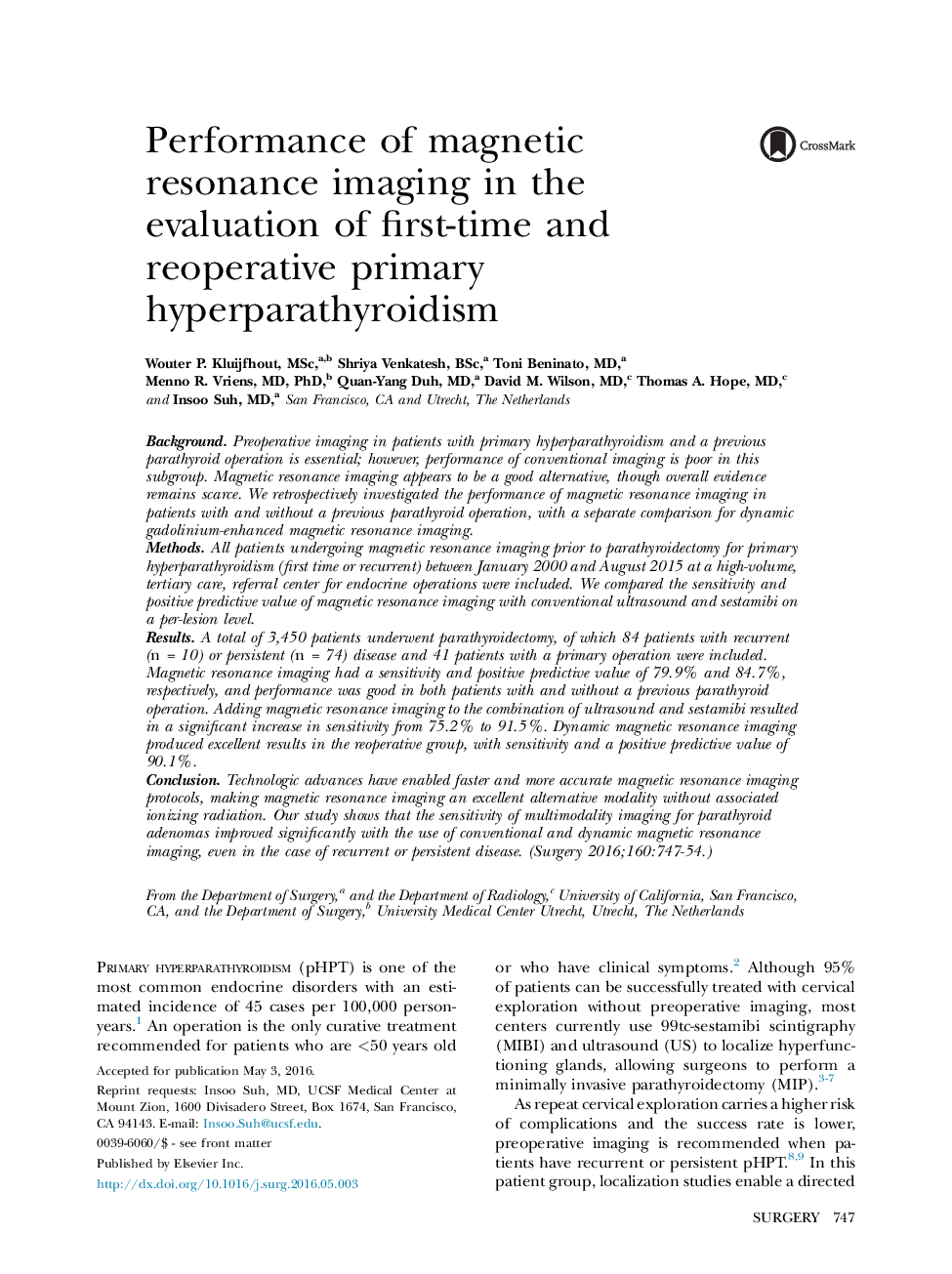| Article ID | Journal | Published Year | Pages | File Type |
|---|---|---|---|---|
| 6254900 | Surgery | 2016 | 8 Pages |
BackgroundPreoperative imaging in patients with primary hyperparathyroidism and a previous parathyroid operation is essential; however, performance of conventional imaging is poor in this subgroup. Magnetic resonance imaging appears to be a good alternative, though overall evidence remains scarce. We retrospectively investigated the performance of magnetic resonance imaging in patients with and without a previous parathyroid operation, with a separate comparison for dynamic gadolinium-enhanced magnetic resonance imaging.MethodsAll patients undergoing magnetic resonance imaging prior to parathyroidectomy for primary hyperparathyroidism (first time or recurrent) between January 2000 and August 2015 at a high-volume, tertiary care, referral center for endocrine operations were included. We compared the sensitivity and positive predictive value of magnetic resonance imaging with conventional ultrasound and sestamibi on a per-lesion level.ResultsA total of 3,450 patients underwent parathyroidectomy, of which 84 patients with recurrent (n = 10) or persistent (n = 74) disease and 41 patients with a primary operation were included. Magnetic resonance imaging had a sensitivity and positive predictive value of 79.9% and 84.7%, respectively, and performance was good in both patients with and without a previous parathyroid operation. Adding magnetic resonance imaging to the combination of ultrasound and sestamibi resulted in a significant increase in sensitivity from 75.2% to 91.5%. Dynamic magnetic resonance imaging produced excellent results in the reoperative group, with sensitivity and a positive predictive value of 90.1%.ConclusionTechnologic advances have enabled faster and more accurate magnetic resonance imaging protocols, making magnetic resonance imaging an excellent alternative modality without associated ionizing radiation. Our study shows that the sensitivity of multimodality imaging for parathyroid adenomas improved significantly with the use of conventional and dynamic magnetic resonance imaging, even in the case of recurrent or persistent disease.
